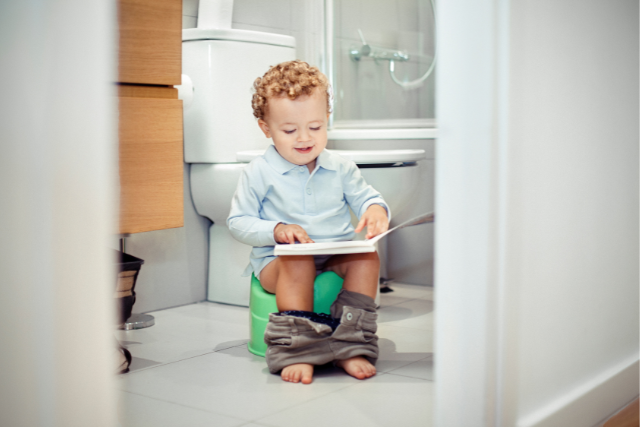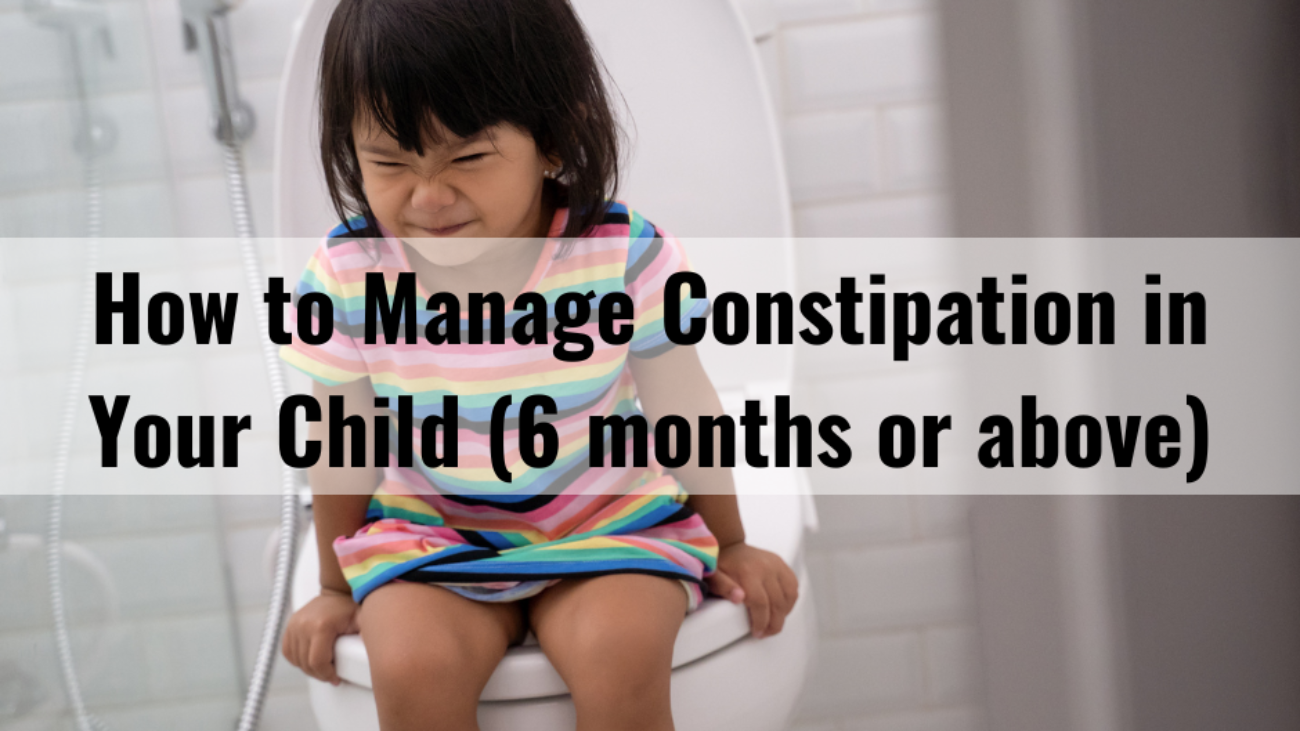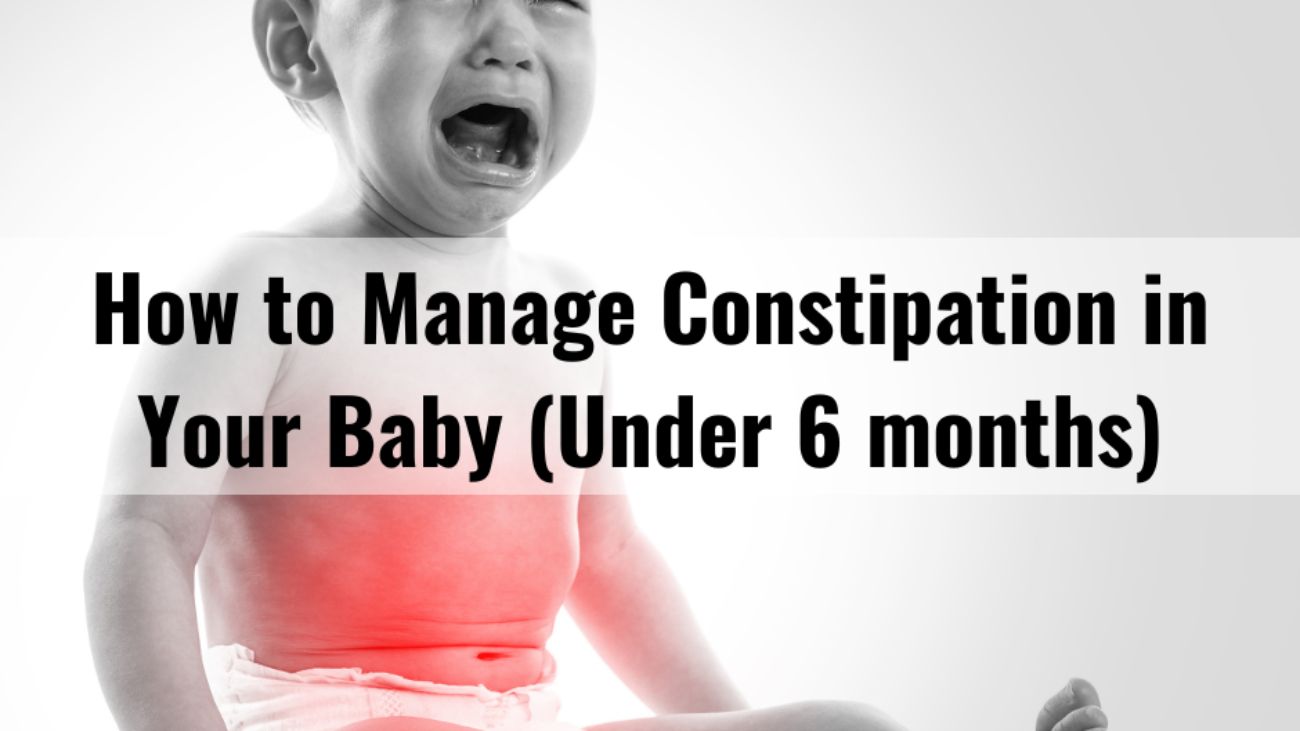Constipation in children is extremely common. I don’t deal with constipated children a lot in my practice, even my son, he is such a “regular” boy. Most parents are overly concerned about how often their child has bowel movement, because they have been taught that a healthy child should have a bowel movement every day. This is not TRUE.
WHAT IS NORMAL?
It is very important for parents to recognize there are many “normal” patterns for bowel movements in children.
- Bowel movements decrease down to about 1 or 2 each day from age 2 months to 3 years.
- Children 3 years or older have about 1 bowel movement each day (here).
- Bowel movements change in thickness, number and colour when a change is made to what your child eats (e.g., when babies are starting solid foods or cow’s milk).
Your child is not constipated if his or her stools are soft and pass easily, even if it has even a few days since last bowel movement.
WHEN YOU SHOULD WORRY?
When the bowel movements are 1) dry and hard 2) difficult or painful to pass.
The frequency of bowel movements is not as important as whether the child can pass stools easily.
CONSTIPATION IN INFANT 6-12 MONTHS
In infants, any changes in diet may result in stool inconsistency and/or change in frequency of bowel movements.
COMMON CAUSES OF CONSTIPATION
- Changing from breast milk to formula or cow’s milk.
- Introducing new formulas. Some formulas may be more constipating than others.
- Incorrect formula-to-water ratio (preparation method).
- Introducing solid food(s) – Breastfed babies may be more prone to constipation when solid foods are introduced (at 6 months). This is because their tiny tummies are used to process the easily and highly digestible breast milk.
CONSTIPATION IN CHILDREN AGE 1 YEAR AND OLDER
Constipation can make bowel movement painful, so your child may try to prevent having one. Once a child begins to be afraid of passing bowel movements, the cycle of chronic constipation has begun and bowel movements become more and more abnormal.
COMMON CAUSES OF CONSTIPATION
- Toilet training. Refuse going to toilet, due to not wanting to take a break from play or not wanting to use certain facilities such as the school toilets or travelling.
- Diets low in fibre.
- Lack of fluid intake. Sometimes the normal amount of fluid a child drinks is not enough, such as when the weather gets hot or the child increases his or her physical activities.
- Excessive intake of dairy products. Milk does count as part of the fluid but be aware that too much milk can be a contributing factor to constipation as it means that a child will be eating less foods and thereby less fibre.
If high intakes of any foods create a lack of fibre or fluid intake, then constipation may result.
MANAGEMENT OF CONSTIPATION
Bathroom Routine
- Children who are toilet trained should practice sitting on the toilet for 5-10 minutes every day after each mealtime (same time every day).
- No distraction. Make sure parents or siblings aren’t coming in and out the bathroom when it is “their toilet time”, so that they can relax and make sure that they sticks to their morning bathroom routine consistently every morning. It usually takes up to weeks or months for them to start going consistently.
- Do not ignore the “urge” to go to toilet as this can lead to harder, larger and drier stool. Make sure they have enough privacy and time to pass stools comfortably.
- It is important to teach your toddler to “listen to your body” or “listen to your bottom” and go to toilet when they get the message. Then , you can take them to the bathroom right away. Parents should listen or watch the signs:
- Suddenly stop whatever activity they are doing
- Suddenly squat or sit down
- Leave the room or hide in a corner
- Stiffen up, extend their bodies upright, stand on their tip toes and tighten the muscles in their bottom
- Face turns red or change tone of their voice
- Unable to pay attention to you
- Make sure your child’s feet are resting on something, such as a foot stool. It helps relax the pelvic floor muscles, which can help move the bowels.
- Keep some reading or picture books in the bathroom and encouraged your child to look at them and try to relax.

Increase Fibre Intake
It is important your child eat a healthy and balanced diet. The recommended intake of fibre are 19 g of fibre per day for a 1-3 year old and 25 g per day for a 4-8 year old (here).
- Offer at least one serving of vegetables or fruit at each meal or snack. In this way, your kids should get adequate fibre daily.
- Gradually increase fibre intake. Going from a low fibre intake to their desired goal too fast can cause symptoms include abdominal pain, bloating, and gassiness.
- Choose whole grains – e.g. whole grain bread, whole wheat pasta, brown rice, whole grain cereal, oat, quinoa, barley, etc.
- Choose legumes – e.g. beans and lentils.
The best way to introduce more fibre to your child’s diet is to do so by adding some of those fibre-containing foods slowly. For example, provide a serving of fruit at lunch for a few days, then add a high fibre cereal (at least 3 g of fibre per serving) at breakfast until you reach the goal. Also, If your child is constipated and you are feeding him the rice-based infant cereal, then try bran- or oat-based cereal instead.
Avoid Binding Foods
Avoid white starchy foods, banana and cheese. Most white starchy foods are low in fibre, e.g., white rice, white bread, white pasta and breakfast cereals. These foods will bind the stool so that it is harder to pass and this can also cause pain when passing.
Increase Fluid Intake
- Water is the only things that helps your child get over their constipation.
- Babies 6 – 12 months:
- Offer up to 1 oz (30 mL) of fruit juice between feedings to a maximum of 4 oz (125 mL) in 24 hours.
- Sips of water from an open cup (about 2-3 oz or 60 – 90 mL at a time).
- Note: Juice and water should not replace regular feedings.
- 1 – 3 years Children:
- Recommended total fluid intake: 4 cups (900 mL) per day (here).
- Offer 500 mL (2 cups) of milk per day with meals and snacks.
- Offer water throughout the day.
- Limit 100% fruit juice to 1/2 cup (125 mL) per day (OPTIONAL).
Natural Laxatives
Why juice? Juices containing high amounts of sorbitol can help draw water into the bowels to make stool easier to pass. Prunes, pears and apple juices usually contain higher amounts of sorbitol compared to other juices and therefore can have some benefit in relieving constipation.
- Offer “juice water” (diluted fruit juice) which mean 95% of water and a tiny splash or real 100% fruit juice. Limit 100% fruit juice intake to no more than 1/2 cup per day.
- Mix prune puree with a favourite food (cereal or crackers).
- Ground flax seed. Mix in cereal, soup, smoothie, baked goods, or yogurt. Dosage: 1 tbsp per day (toddler); 2 tbsp per day (older children).
Increase Physical Activity
We all know physical activity is a natural bowel-stimulator. Get your child off the couch, turn off the TV and hide the iPad. Checkout the Physical Activity Guidelines.
Medications & Laxatives & Fibre Supplement
Talk to your doctor and/or pharmacist before using any of these methods, as doses are weight-dependent. Follow the instructions carefully for the dose and the amount of the time you child should be taking them. As a dietitian, I will focus on “real foods” rather than supplements.
Prebiotic & Probiotics Supplement
Currently, there is no enough evidence or research to show that pre/probiotics supplement help with constipation. However, foods like cheese, milk and yogurt with probiotics are safe for most people including children.



